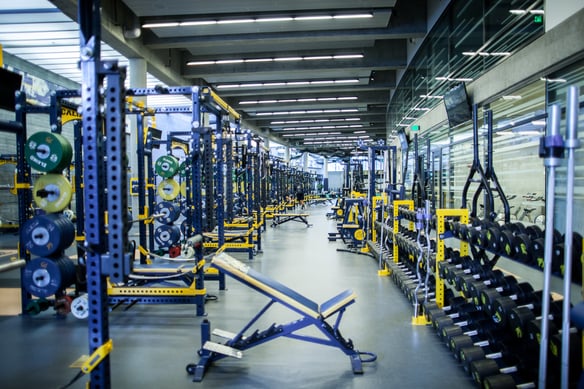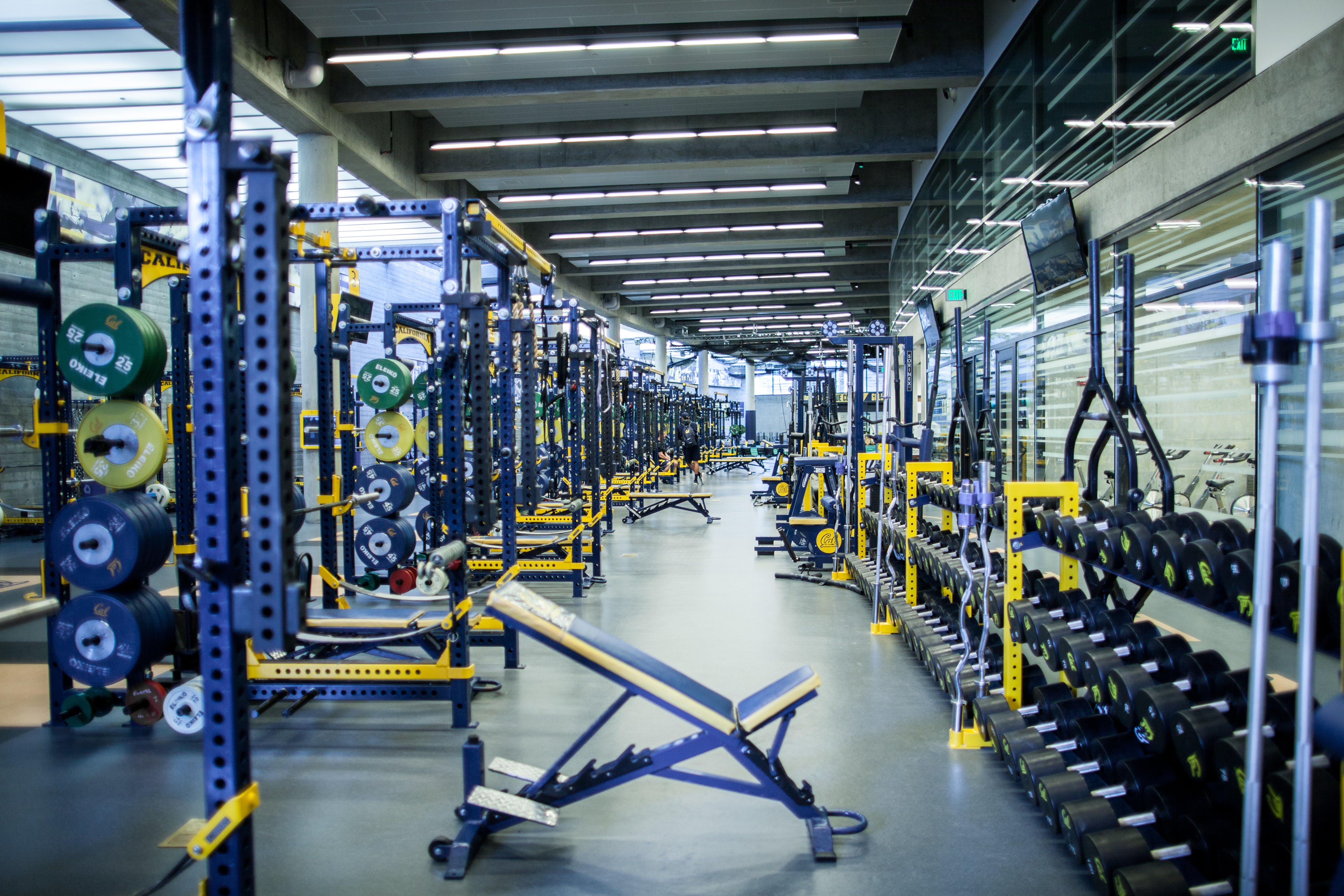The Importance of Strength Training for Athletes

Nearly every champion athlete lifts weights in some way, shape, or form. It is embraced by the athletic masses to the point that every team in a professional sport has a designated weight coach. All players, young and old, should develop a foundation of strength. What exactly does strength training do for you though? What actually happens to an athlete's body when they start pumping iron? Read on for some fundamental answers to these questions.
Strength Training on the Physiological Level:
Without getting into Exercise Physiology 301, here are some basic adaptations to strength work, starting with the earliest levels and moving to the ones in the intermediate to advanced stages of a program.
1. Motor Learning and Skill Acquisition
First and foremost, the body learns the skill of the lift. This happens just like in any skill you learn, such as playing the piano; your brain puts together a motor program that allows you to better perform whatever you are trying to learn. Those fast gains that a beginning gym rat makes on the bench press don’t come because he instantly got “swollified”. No, rather his brain learned to put together the motor program to lift the weight. Just like the piano, your second session of “Mary Had a Little Lamb” will probably sound better than the first time you played it. This is no different on the neurological level when it comes to strength training.
Making early, quick gains doesn’t necessarily mean the muscles are instantly more powerful or strong, but rather the body is getting accomplished at this new skill. Those coveted muscle size gains will happen a bit later on (although fast and furious volume training and proper recovery can put on some “emergency size” if the athlete has the genetic profile for it). Before training, the athlete lifted less because his or her brain just didn’t know how to put together that skill. When training athletes, remember that strength is a skill just like any other sporting movement. On top of this, lifting a maximal weight is a different neuromuscular skill than lifting a moderate weight, which carries massive implications for balancing strength and performance.
2. Intramuscular and Intermuscular Coordination
Here is where the brain aspect of training begins for an athlete. Your muscles will learn to fire more efficiently within themselves. More power! Yes! This piggybacks off of motor learning, but this more specific gain in coordination has exciting implications for athletic performance.
Let’s take a bicep curl for example. Initially, your muscle fibers may not “know” how to all coordinate at the same time, and some fibers might not be used to getting recruited at all. After doing a few workouts of curls, more of the bicep muscle fibers will get recruited, and they will engage more efficiently. This also happens to be good for gains in strength and power that transfer to the field of play (although bicep curls are not the best choice for an exercise that will transfer well to most sports, think something more along the lines of deadlifts for an athletic transfer).
Another way to think of this is to imagine a football players hitting a training sled. An untrained muscle is like an individual linemen hitting the sled on his own, while a trained muscle is like the group of linemen hitting the sled all at once. Which is more powerful? If I were the opposing team, I would prefer the first group! After training, your muscles learn to “hit harder”.
Your muscles will also learn to engage more efficiently working with each other. In any sport, there is a specific sequence in which muscles must engage (and relax). Strength training will help the body to learn a more powerful coordination of different muscles working together. This is why adolescent athletes often make significant athletic gains from starting a lifting program, as this assists their total body levels of coordination. A very effective example of this is the use of Olympic lifts in the acquisition of the triple extension mechanism of the body (hips, knees and ankles). An untrained athlete can put several inches on their vertical leap or cut several tenths off of a 40 yard dash in a short period of time through picking up this neuromuscular skill.
3. Muscle Size Gains (Hypertrophy)
Finally, the aspect that more people seem to care about than anything: gaining muscle mass. Athletes pushing heavier weights in the early phases of training is primarily due to neurological factors. Once those factors start to level out, the body will reach new strength levels by putting on more muscle size and density. This of course, is in respect to the way you train. Low volume programs that induce little mechanical damage to the muscle tissue won’t cause too much increase. On the other hand, high volume, moderate intensity programs (such as a 5x10 squat or deadlift program) will cause significant gains in muscle size due to the sheer mechanical damage of the muscle and the required stress response.
Muscles getting larger is a later adaptation to strength training, although this also depends a bit on the genetic responsiveness of an athlete. Research from University of Alabama-Birmingham has shown that a 4 month strength training program led to ranges of muscle size increase between 0 and 50%. This means that some athletes can almost look at a weight and get big, while others can struggle and not put on...well, anything! Genetic factors such as myostatin levels and satellite cell density play a large role in how much muscle an athlete can expect to gain. We are not all programmed to be Arnold Schwarzenegger or Ronnie Coleman.
Last, but not least; athletic performance which was increased through gains in muscle size last longer than gains that are purely neuromuscular. This is because the body carries a “neuromuscular tuning” that can go “out of tune” quickly in a detrained state. On the other hand, when a person puts on muscle, it takes a while to lose it. This is often why many programs feature a “hypertrophy” phase prior to the start of a grueling season, as the muscle-size pickup will help an athlete maintain performance for an extended period of time.
Conclusion:
In a nutshell, strength training enhances athletic performance. There are several different forms of strength training, some catering more towards neuromuscular adaptations, and some to muscle size. Knowing what is going on with your body as you train is foundational to reaching peak performance when it matters most.
References:
- Siff, M. 2003. Supertraining. Denver: Supertraining Institute.
- Zatsiorsky, V. 1995. Science and practice of strength training. Champaign, IL: Human Kinetics.
- Epstein, D. n.d. The sports gene.
About the Author

Joel Smith is an assistant strength and conditioning coach at the University of California, Berkeley. He has a background as a track and field athlete and coach, lecturer, researcher, personal trainer, writer and consultant. He is the founder of www.just-fly-sports.com, an educational site devoted to providing speed and power athlete’s practical knowledge to reach their highest potential.
Related Posts

The Best Bench Press Variation You’re...
This post is part of our Coaches Corner series with Taylor Rimmer. Taylor is NSCA-CPT, StrongFirst...

Does Powerlifting Harm Heart Health?
A recent study has discovered that a 12-week supervised strength training program (SSTP) may result...
-1.png)
Barefoot Running: Is It For You? |...
Run Free: Consider Less Cushion
Updated October 2020:
With more athletes looking for ways to...


